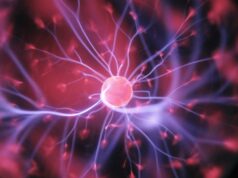
St Jude Medical has received Food and Drug Administration (FDA) approval of the Invisible Trial System. The system, which received CE mark in June 2015, is fully wireless and leverages Apple technology for both the patient and physician controllers. The company says that the system is designed to provide patients a more improved and discreet spinal cord stimulation (SCS) trial experience.
For some patients, complex controllers and bulky programming cables can disrupt the SCS trial experience and act as barrier to the therapy. With the Invisible Trial System, St Jude Medical believes it has removed these barriers, allowing patients to more effectively evaluate their therapy.
The system relies on Bluetooth wireless technology to provide patients with a safe, secure and entirely wireless SCS trial experience. The system provides patients with an iPod touch digital device as a controller, while physicians utilise an iPad mini digital device to programme and evaluate their patient’s therapy.
The programmer also displays trial usage data from a small external pulse generator (EPG) and allows the physician to print or email the data in PDF format. Bluetooth wireless technology safely and securely communicates wirelessly between the EPG and patient and physician devices, eliminating the programming trial cable.
“Patients undergoing SCS trials consistently tell us about challenges they find in navigating the SCS trial system, from programming the device, to discomfort from the programming cables, to management of both issues. These hindrances may impede the integration of the technology into their daily activities, which shifts their focus away from evaluating the effectiveness of SCS therapy,” said pain specialist Jason E Pope, president of Summit Pain Alliance in Santa Rosa, USA. “By providing a discreet trial system, St Jude Medical will help patients focus more on their potential pain relief and functional improvements, and less about the burdens common to traditional trial systems.”
One of the key system features of the St Jude Medical system is the use of EPG as the system’s power source. Because the EPG uses Bluetooth wireless technology to communicate between the patient’s iPod touch controller and the stimulation system, the overall device profile has been reduced so the system can be worn discreetly under a patient’s clothing. The effect is that the system feels essentially invisible to the wearer, resulting in a more comfortable trial experience.
“When we developed the new Invisible Trial System, we took into account physician and patient feedback that current trial systems were in some cases preventing patients from adequately assessing their therapy,” said Eric S Fain, group president of St Jude Medical. “By providing a more patient-friendly option, we think we can shorten the learning curve related to trial programming devices and allow patients to better assess the potential pain relief they are receiving from spinal cord stimulation.”













